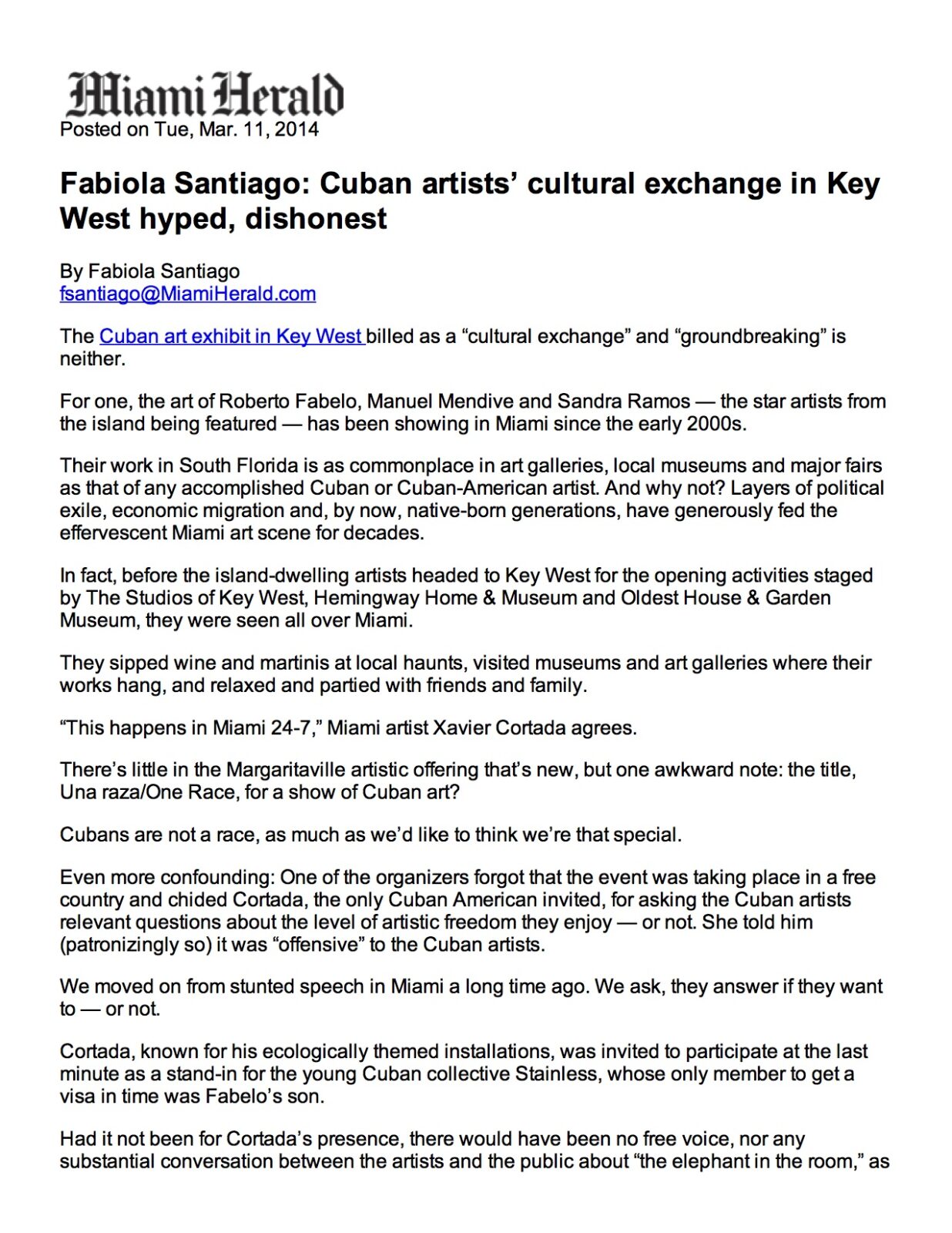

Cuban artists’ cultural exchange in Key West hyped, dishonest
By Fabiola Santiago
The Cuban art exhibit in Key West billed as a “cultural exchange” and “groundbreaking” is neither.
For one, the art of Roberto Fabelo, Manuel Mendive and Sandra Ramos — the star artists from the island being featured — has been showing in Miami since the early 2000s.
Their work in South Florida is as commonplace in art galleries, local museums and major fairs as that of any accomplished Cuban or Cuban-American artist. And why not? Layers of political exile, economic migration and, by now, native-born generations, have generously fed the effervescent Miami art scene for decades.
In fact, before the island-dwelling artists headed to Key West for the opening activities staged by The Studios of Key West, Hemingway Home & Museum and Oldest House & Garden Museum, they were seen all over Miami.
They sipped wine and martinis at local haunts, visited museums and art galleries where their works hang, and relaxed and partied with friends and family.
“This happens in Miami 24-7,” Miami artist Xavier Cortada agrees.
There’s little in the Margaritaville artistic offering that’s new, but one awkward note: the title, Una raza/One Race, for a show of Cuban art?
Cubans are not a race, as much as we’d like to think we’re that special.
Even more confounding: One of the organizers forgot that the event was taking place in a free country and chided Cortada, the only Cuban American invited, for asking the Cuban artists relevant questions about the level of artistic freedom they enjoy — or not. She told him (patronizingly so) it was “offensive” to the Cuban artists.
We moved on from stunted speech in Miami a long time ago. We ask, they answer if they want to — or not.
Cortada, known for his ecologically themed installations, was invited to participate at the last minute as a stand-in for the young Cuban collective Stainless, whose only member to get a visa in time was Fabelo’s son.
Had it not been for Cortada’s presence, there would have been no free voice, nor any substantial conversation between the artists and the public about “the elephant in the room,” as
Cortada calls the lack of freedoms in Cuba. The “exchange” might have been a monologue.
Not that this project is a true give and take. A real exchange would have shown in Havana the contemporaries in exile of Fabelo, Ramos and Mendive.
Thirty wood carvings by a dead Key West folk artist of Cuban descent showing at Havana’s premier national museum, Museo Nacional de Bellas Artes, is hardly comparable.
Nothing against the lovely work of Mario Sanchez, a cigar-maker’s son born in 1908 who is either rolling in his grave or jumping up and down at being shown in Castro’s Cuba, depending on with whom you speak. Nothing against the work of the participating island artists, two of whom I interviewed extensively many years ago, when their presence was ground-breaking.
What’s dishonest is that this “cultural exchange” was driven by the political interests of business people in Key West who want to operate in Cuba, and not by an organic movement of Cuban artists and curators who want to genuinely share experiences and exchange points of view.
What’s being sold to the public in Key West is business and hype as art.